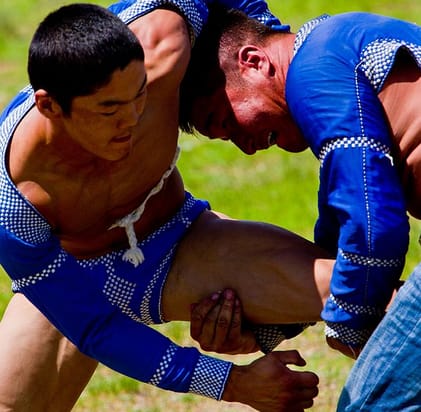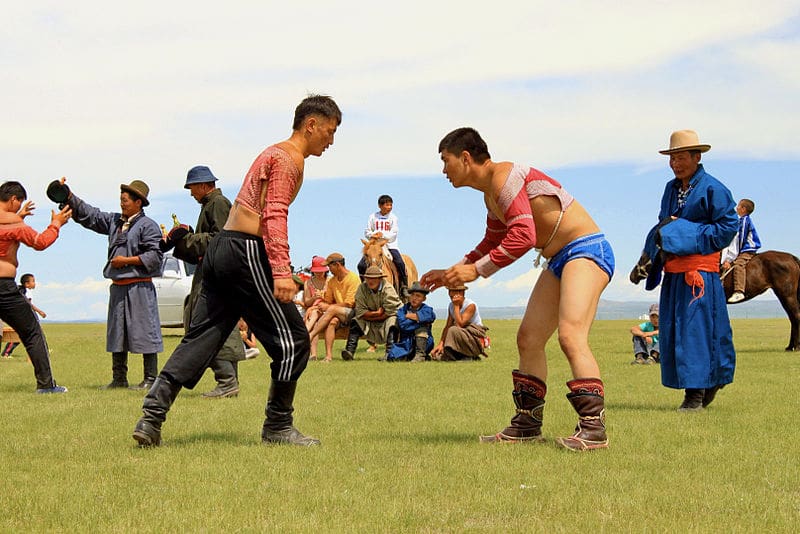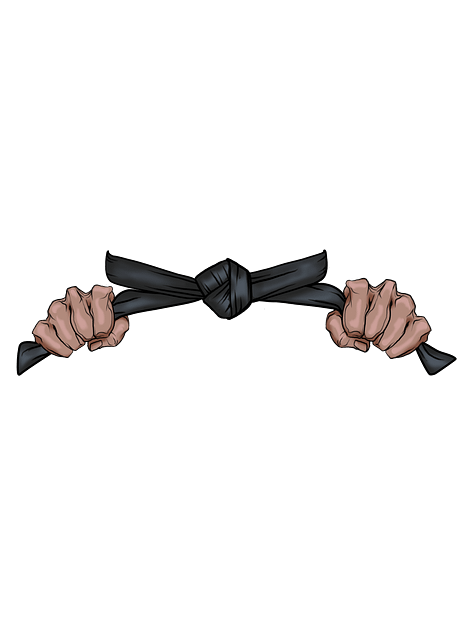Mongolian Wrestling Culture
Just to bring the uninitiated up to speed, wrestling is a combat sport involving grappling techniques such as clinch fighting, throws, takedowns, joint locks, pins, and other grappling holds. In some cultures it can be for entertainment, while in others it’s a genuine competition. Enter Bökh.
Wrestling is one of the most physical competitions that exists, between two people who attempt to gain and then keep a superior position over their opponent. Being such a grueling, emotional sport it’s easy to see how it’s a cornerstone of many cultures, and today we’ll be focusing on a particularly ancient type of wrestling known as Bökh.

The Origins Mongolian Wrestling or Bökh
Cave paintings in the Bayankhongor province of Mongolia dating back to the Neolithic age of 7000BC show two grappling men surrounded by crowds. Bökh is also depicted on bronze plates discovered of the Xiongu empire of about 206 BC. Bökh was intended originally as a military sport to provide strength, stamina, and hand to hand combat skills to troops.
Genghis Khan and later Emperors of the Mongol Empire, and also the later Khanates, used this art to help strengthen and train their troops, so the events were included in local festivals, and became a key factor in deciding the candidate rankings in imperial exams, and outstanding wrestlers were entitled to high positions.
This culture of wrestling has carried on into the modern day, and is the most popular event of Naadam, the national independence celebration held outdoors every summer in the Mongolian capital Ulaanbaatar, and is one of the “Thee Manly Skills,” along with horse riding and archery. Mongolian wrestlers have important cultural status in Mongolian society, and are seen to embody the ancient ideals of strength, sportsmanship, and nobility. The rituals associated with bökh have been virtually unchanged for generations.
The Rules of Bökh
When a match begins, there are two contestants, and the contest follows a single-elimination system. To show that they’re ready to begin, the wrestlers slap their thighs to start the match. Each wrestler has a zazul who acts as both their coach and herald, and at the beginning of the third, fifth, and seventh rounds the zazul sings the praises of his wrestlers heroic deeds, and during lulls in the match they slap their wrestler’s back and urge them to struggle on.
In the final competition, all the zazuls drop in the wake of each wrestler as he takes steps toward his opponent.
Unlike many forms of wrestling, there are no weight classes, and the object of a match is to get an opponent to touch his back, knee, or elbow to the ground using throws, trips, or lifts. Ranking in the sport can only be attained during the Naadam festival, and is determined by the number of rounds won by each wrestler. The ranks unranked, Falcon, Elephant, Lion, and Titan.
Before and after the match, each wrestler does a traditional dance known as devekh, which originates in shamanistic rituals. Mongolian wrestling matches are held on open, grassy fields or bare dirt. Only men are allowed to compete, and about five hundred wrestlers on average enter the Nadaam every year, and the eliminations are decided after nine rounds of wrestling.
Traditionally, the host of a naadam had the privilege of choosing opponents and arranging matches, often in ways that gave his favorites the upper hand. These arrangements sometimes resulted in serious disputes between hosts and visiting wrestlers. The modern wrestling code instituted in 1980 stipulates that opponents be selected by drawing lots at major cross-regional naadams and specialized wrestling championship matches; in local competitions the traditional system still holds sway.
In the modern day, many champions of Bökh transition successfully in their down time into either Chinese wrestling or Japanese sumo.



